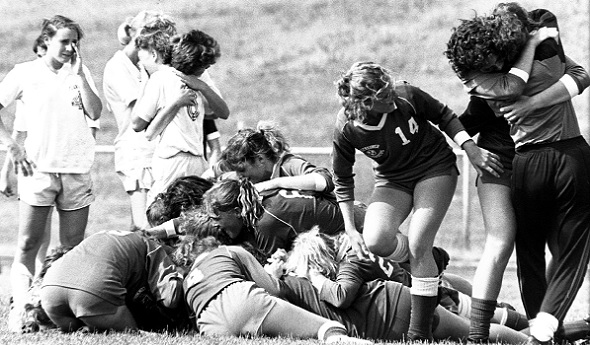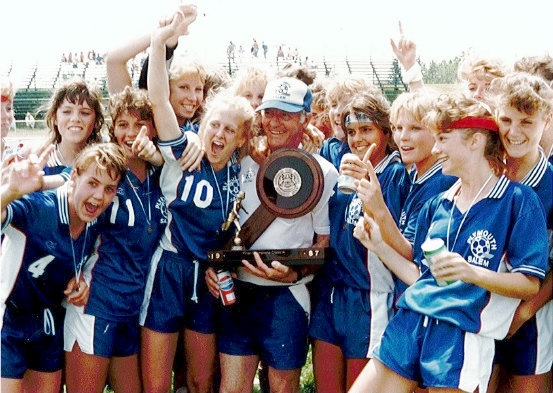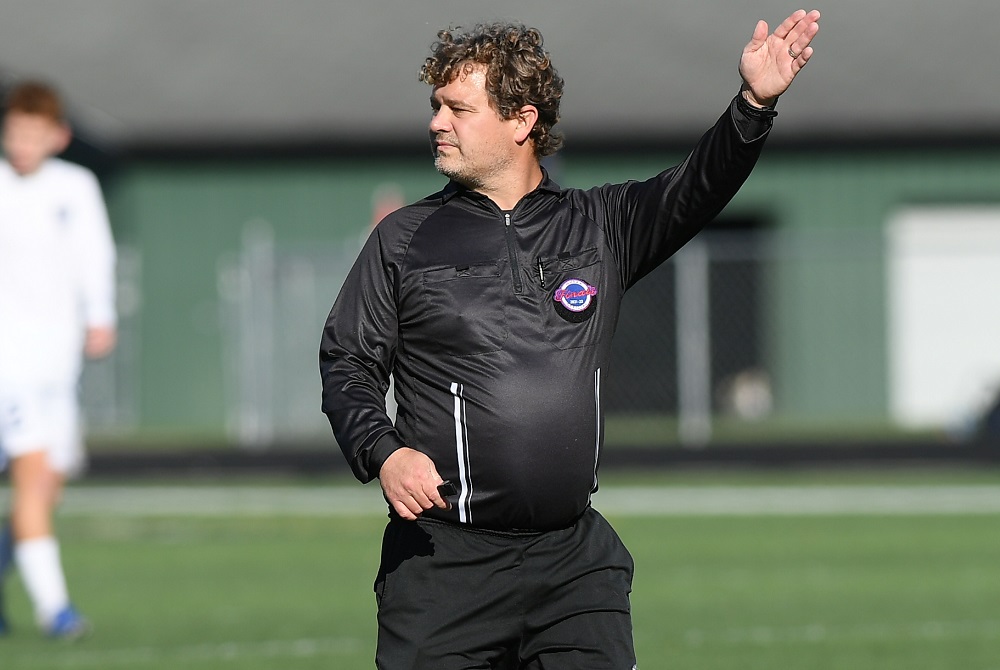
#TBT: Recalling These 1st Class Champs
May 1, 2014
By Geoff Kimmerly
Second Half editor
This spring's MHSAA Girls Soccer Tournament will include 450 schools playing across four divisions beginning later this month.
Three decades ago, girls soccer was just getting started in Michigan. But growth came quickly: In 1987, after four seasons awarding one "open class" champion, Salem and Saginaw Eisenhower became the first multiple winners to emerge from an expanded two-class tournament.
 Salem, which since has finished runner-up in 1995, won the Class A championship 2-1 over Livonia Churchill. Churchill had won the last "open class" championship the year before and also fell 2-1, in overtime, in 1988 to Canton.
Salem, which since has finished runner-up in 1995, won the Class A championship 2-1 over Livonia Churchill. Churchill had won the last "open class" championship the year before and also fell 2-1, in overtime, in 1988 to Canton.
Eisenhower, which had finished runner-up in the first MHSAA Final in 1983, beat Plainwell 3-2 in the first Class B championship game. The title was among final crowning achievements for Eisenhower, which closed after the 1987-88 school year and joined with the also-closing Saginaw MacArthur to form Saginaw Heritage the following fall.
Plainwell also would fall in the 1988 Class B Final, 4-1 to Madison Heights Bishop Foley, but won the Division 2 title in 2011 and finished runner-up in 2012. Heritage won the Division 1 championship in 2002.
The MHSAA split girls soccer from two classes into three divisions in 1998 and then moved to the current four-division format in 2000.
PHOTOS: (Top) Saginaw Eisenhower players celebrate after their 3-2 win over Plainwell in the 1987 Class B Final. (Middle) Salem players surround coach Ken Johnson and their newly-earned Class A title trophy after winning 2-1 over Livonia Churchill.

Be the Referee: Soccer Timing
By
Sam Davis
MHSAA Director of Officials
September 20, 2022
Be The Referee is a series of short messages designed to help educate people on the rules of different sports, to help them better understand the art of officiating, and to recruit officials.
Below is this week's segment – Soccer Timing - Listen
One of the biggest complaints people make about professional soccer is never knowing how much time is really left in the game. The clock counts up from zero, and the referee can add time at their discretion.
But that’s not the case in high school soccer.
To start with, halves are 40 minutes, not 45. The clock starts at 40 and counts down. And when players are injured and the ball is not in play, the clock will stop and then restart when action is ready to continue.
In the last five minutes of the game, the clock stops for substitutions by the leading team, so a coach can’t stall by sending in a new player. When the clock hits zero and the buzzer sounds … the game is over. There’s no guessing how much added time there is – the end of the game is the end of the game.
Previous Editions:
Sept. 13: Volleyball Replays - Listen
Sept. 6: Switching Sides - Listen
Aug. 30: Play Clock - Listen
Aug. 23: Intentional Grounding Change - Listen

